Co-Creating With Consumers
An Interview with Jamie Wideman, VP of Innovation at Molson Coors
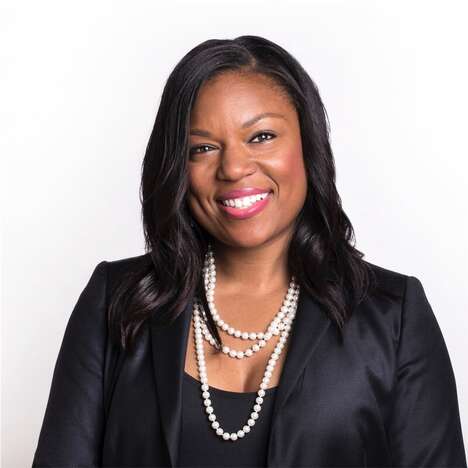 Passionate about understanding her consumers and their unique nuances, Jamie Wideman is the VP, Innovation at Molson Coors. In addition to leading a diverse team at Molson Coors, Jamie shares how the brand is evolving with the help of multicultural insights and co-creation opportunities with consumers that address unmet needs in the market.
Passionate about understanding her consumers and their unique nuances, Jamie Wideman is the VP, Innovation at Molson Coors. In addition to leading a diverse team at Molson Coors, Jamie shares how the brand is evolving with the help of multicultural insights and co-creation opportunities with consumers that address unmet needs in the market. 1. What does innovation mean to you?
For me, innovation is pretty simple. We’re focused on adding value, and my job is to make old things better, to create new things, and epic experiences for consumers. I'm in beverage innovation at Molson Coors, but I strive to meet the needs of consumers that aren't currently being met, and to give them things that they didn't even know they wanted. It's a constant iterative process with problem solving, and it's thinking about how we can continue to bring new, awesome products to our consumers.
2. How does your team generate new ideas?
We're pretty obsessed with the consumer that we're reaching, which is legal drinking age consumers. Everything we do starts with them. If I think about our marketing vision at Molson Coors, it's about bringing more people to the bar, so as we think about our process, we want to ensure that just by nature it's inclusive, and that's inclusive of age, gender, different backgrounds and diversity.
We really take the time to get to know consumers as humans since these are people that we're hoping fall in love with our beverages. Oftentimes, they know what they want, but sometimes they don't. And 100% of the time, they know what they don't want so our approach is about identifying those opportunities. It's about identifying that white space, and the blindspots within a white space, to make sure we're offering solutions for unmet consumer needs.
3. You mentioned extending diversity and inclusion into the idea generation process. Is that something you specifically outline with ideation or is it something that comes naturally to your team?
I think it's both. We certainly want to evolve our brand with multicultural insights, but we're also co-creating with more diverse consumers. Gone are the days of creating something cool and hoping that consumers like it just because we think they will.
We bring consumers in from the very beginning to workshop ideas together, to pressure test and ensure that we're meeting expectations. From a tactical perspective, we leverage both insight and foresight trends, and we have a lot of resources at our disposal that help us keep a finger on the pulse on what’s happening in culture.
Personally, my guilty pleasure is watching a lot of TV, and whether it's social, it's television, or being out and about, being immersed in culture is a big part of the more common-sensical parts of how we get to the consumer. It's about understanding how consumers are moving and about what they really need. And they're all different, whether from an age perspective or their niche preferences.
For example, we have consumers focused on better for you products and others that are really open to indulgence. Because of that, you can't really treat all consumers like a monolith, and you have to go deep to understand those nuances.
Recently, we launched a brand called Simply Spiked, a partnership with our friends at Coke. Two big insights we leveraged were that consumers were craving big, bold flavor while also seeking a better for you option. We also knew that some consumers were using Simply already as part of their mixology regimen, so when we put those two things together, Simply Spiked was born. It’s been so amazing seeing the Twitter conversations surrounding the launch to learn what consumers like and what they want to see next.
4. Do you have any specific rituals for resetting your team to be creative?
I'm a big proponent of taking time off, so I take my vacation and encourage my team to take theirs. Innovation is a job that’s not for the faint of heart because it requires a lot of stamina–both time and brainpower. And so taking time away to recharge, get inspired and reset is so important.
I found that some of my best ideas come from moments when I've been able to step away, rest, explore and get out in the world. People are naturally more creative when they're not being forced into creativity.
Now, we still do our fair share of brainstorms but there is value in getting out in the world in order to create that mindspace for creativity.
5. You mentioned the importance of getting out of the office and visiting the wholesalers and retailers Molson Coors works with. Can you talk more about the significance of that for your team?
I think as marketers, we have a responsibility to get out and understand how the marketplace works. When you're in a three-tier system, there are gatekeepers and stakeholders that are important to involve because there's a journey of getting that final product to the consumer.
It’s one thing to come up with these ideas behind a computer, and another to actually get out in the market and see if the ideas actually work. It’s also crucial to get feedback from the people who have to manufacture, sell or display these products. It’s about having the full perspective, and I think you do that by getting out into the world, getting out into the marketplace, and really understanding how people are interacting with your brand or products. It’s also about empathizing with the people whose job it is to get those products in front of the consumer.
6. How do you identify trends? What resources does your team use to spot trends and consumer insights?
There’s a myriad of things that we look at and we're constantly voyeurs as part of a social conversation. Our brand social media accounts are also a great place for us to hear from people who are interested in our brands.
We also rely on proprietary foresight tools and work with our partners to help inform what those next spaces are. We look at adjacent categories driving the ALC space, whether that's food or non ALC. We're constantly paying attention to those things, whether it's to get inspired for flavor or to identify what future opportunities could exist for us.
Lastly, we watch how consumers are moving. One example is that this past January was one of the biggest dry Januarys on record, and we've really been tapped into this. The No and Low alcohol spaces are spaces for flavor and there was a season where there was so much conversation around better for you and that's really important.
7. Can you give an example of an instance of where another industry has influenced innovation at Molson Coors?
You’ve probably seen our partnership with Topo Chico and bringing the first mineral water brand into the hard alcohol space. This is a great example of non-alc influencing the alc segment.
There are also signals that we get from fashion, beauty, travel or food by seeing how consumers are engaging with those things.
It could be sustainability, like the rise of reusable plastics in the beauty world, so thinking about how that affects what we do in beverages and the consumer sentiment around those things.
8. What is the biggest challenge you face when innovating?
Time. We have so many great ideas but often don’t have the time to execute all of them, even though we want to. So I think it's really about figuring out which ones to go for, and how to execute them with pace, while also balancing that perfection.
Personally, I have a really high bar for the beverages we're creating and want to ensure that consumers don't just enjoy them, but that they love them. We want them to fall in love, and balancing that rigor and perfection with progress and speed to market is a fine balance.
You want to make sure that the market and consumers are ready to receive this new idea you’re presenting to them.
9. What makes that innovative culture and how do you create a culture of innovation?
We don't have a hierarchy on our team at Molson Coors. We're one team with one dream, and we’re all inherently curious. We also have a lot of diversity–diversity of background, diversity of thinking, diversity of culture and experience. This creates a culture with a wider perspective, and that’s one of the things I'm most proud of.
Our team is also not shy to share ideas they’re proud of. They're not protective or prideful, and are open to collaboration, whether it's within our team or cross-functional. That ability to have an enterprise mindset of how we develop and how we win helps us foster a culture of creativity and innovation at Molson Coors.
Lastly, there’s no bigger roadblock to innovation than fear of risk and failure. If you're afraid to fail, you’ll never push yourself far enough. Not everything we do is going to work. Because of that, we’re getting progressively more comfortable with pushing the boundaries, and taking smart risks, while also knowing when we want to.
10. You mentioned having less fear of failure. Are there ways you implement that internally?
We have a lot of after-action conversations. Instead of being sad or frustrated when an idea doesn’t go to market, the team puts together a list of what we learned, so the next time we embark on a similar journey, there's a really strong playbook of what works, what doesn't, and some of those things that we need to look out for as a team.
I just appreciate that proactivity, but also that conversation and transparency to be able to say that it's not about pointing fingers but rather about the lesson behind these experiences so that as we continue to move forward, we’re armed with more knowledge.
11. Looking ahead to the future, how will Molson Coors continue to be a leader in innovation?
I've been with the company for nearly two years and we're continuing to break into new categories. We’re consistently bringing consumers products and new propositions that maybe they didn't even know they wanted until they had them in their hands and tasted them.
Our agenda for the future is to push to the forefront of emerging spaces and to be a place where culture is created. When you think about innovation roles within an organization, we want to be the hub of an emerging future.
12. Can you speak about the megatrend of Nostalgia?
While I don't think it's necessarily a new trend, it's certainly one that's got a lot of traction right now. As I was thinking about this, I started to reflect on my mom who has a lot of pictures from when she was coming of age and some of her fashion from the seventies.
When I look at those clothes, I'm like, man, I wish you still had some of those pieces because they're so gorgeous and so in fashion today. And so when I think about the circulation of trends, fashion houses have been doing this forever and ever. There's sort of this element of curiosity, but also discovery that comes with this nostalgic trend and so, what's old is new and what's new is old.
An example I really love is there's a lot of Gen Z-ers revisiting the nineties sitcoms I grew up on and they're falling in love with them.
As I think about my role as a marketer, my aspiration is to constantly get consumers to feel, and to tug those heartstrings. And so, whether it's beverages or clothing or sitcoms, I think that the human need to want and connect is so important. The objective is to transport consumers back to the good old days. And the question is, how do you evoke those fond memories for legal drinking age consumers? To us, it’s tapping into those positive associations and creating these experiences for adult consumers is one of the reasons that nostalgia is such an exciting trend. I'm so glad that people are really going back and digging into some of these moments that remind them of happier times.
References: molsoncoors
Featured Articles
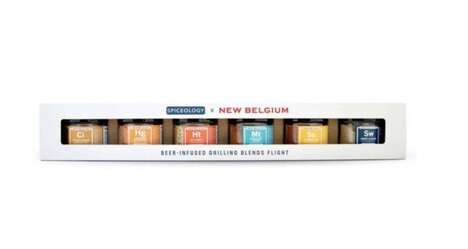
Infused Flavor
Alcohol-infused toppings, condiments and spices enhance flavor
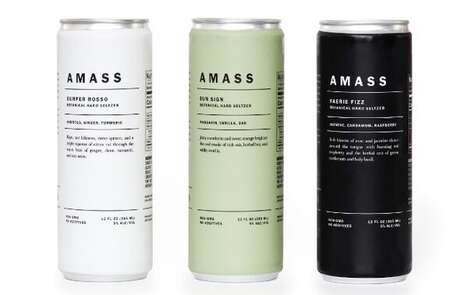
Botanical Seltzer
Hard and alcohol-free seltzers are adapted with botanical ingredients
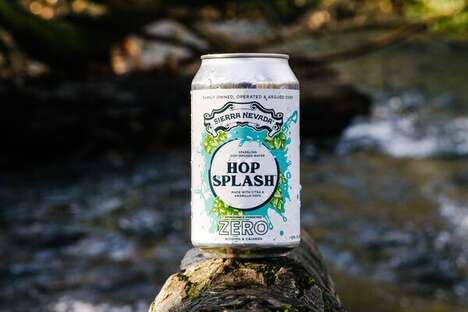
Hoppy Water
Water-based beverages are infused with hops to enhance flavor
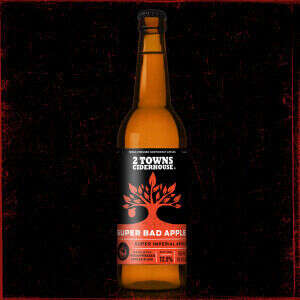
High-ABV Beverage
Alcohol brands are releasing seltzers and ciders with higher alcohol content